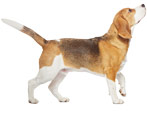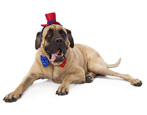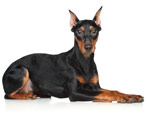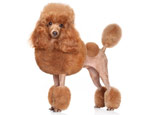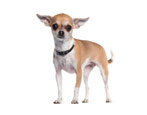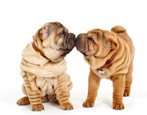Education and training of a dog are prerequisites for its socialization. One of the most important commands that a dog should learn is the “fu” and “not” commands. From the material in this article you will learn how they differ and how to help the dog learn them in early childhood. In addition, we will consider the nuances of training an adult animal and common mistakes in education.




What is the difference between the teams?
Both teams are necessary to prevent unwanted actions of the dog. Someone mistakenly believes that they, in fact, are one and the same, although in reality this is not so. And the point here is not so much that one word is shorter than another, and therefore supposedly better perceived by the pet. Actually these commands are bans of various kinds.


Fu team
It is part of the educational process, this is a team ban on pranks and mischief, as well as frankly stupid behavior. The animal masters this command of cheating, it is unconditional submission to certain rules. For example, this is a ban on:
- biting the owner with an excess of feelings;
- chewing slippers and other shoes;
- mischief and attempts to chase cats;
- aggressive attitude towards other pets;
- garbage collection for a walk;
- barking at unfamiliar animals;
- a fit of joy in which the dog allows himself to jump to the person’s face or puts dirty paws on his clothes;
- inappropriate behavior towards drunken passers-by;
- selection of leftover food from the hosts table;
- barking at the entrance and at the slightest rustle outside the door;
- growling at screeching people inappropriately behaving on the street;
- carelessness in relation to the landlords and their things;
- attempts to violate established rules and prohibitions.




The command is issued at the time the dog commits an unacceptable action, so to speak, at the moment when the pet was "caught" for unacceptable behavior. The animal does not receive any tasty encouragement for the execution of the command, otherwise it will deliberately entertain the owner in an attempt to get tasty. The order sounds strict, reporting, and the animal understands the tone very well, and therefore feels its guilt.
This is a categorical prohibition that cannot be violated under any circumstances.


The meaning of the order is "impossible"
The “impossible” command is introduced into training only after the pet has mastered and fixed the “fu” command. This is necessary in order for the animal to understand the difference between the owner's orders. Unlike the first team, this is a temporary veto, which is carried out only by order. For example, this is relevant in situations where:
- the dog, due to impatience, prevents the owner from applying food;
- the pet grins its teeth at the guest trying to enter;
- the dog arbitrarily takes the decision to protect the owner, when there is no reason;
- when playing, the animal does not wait for the ball or stick to be thrown, snatching it from the master's hands;
- the dog impatiently doesn’t put on street equipment before the walk;
- the pet after walking wants to immediately go into the room, without rubbing its paws;
- the dog tries to grab the hot food while it cools.




Both commands must be executed implicitly after the first pronunciation. However, the action "can not" is usually terminated by the commands "can", "eat", "eat" or others, depending on the specific situation. “Fu” - the team is sharper, the dogs react more sharply to it. In contrast, “impossible” is more loyal, it is used not only at the initial stage of animal education.
It is applied even to a well-trained animal.


Why do you need to train?
If the dog carries out the prohibiting command, this avoids problems not only with neighbors, but also with scandalous personalities who are just waiting for a reason to throw their grudge on others. A trained dog will not give the owner a cause for concern. In a peak situation, she will wait for the right team to do the right thing.

In addition, the study of prohibiting commands will allow avoiding such situations in which the animal may suffer from its actions. This may be the dog’s stop at the moment when she already aimed her teeth at the thrown sandwich or the jumping frog, decided to lick her friend who had come to visit, or was about to conquer the owner’s sofa.


Suitable age
Despite the fact that some dog breeders think that it is necessary to start training the pet as early as possible, the puppy's inhibitory reactions are developed later than the positive skills associated with any activity. At the age of 1 to 3 months, the puppy simply does not understand them. At this time he is in the nursery and goes through the basics of socialization, learns to communicate with his brethren, receives the necessary vaccination.

You can start learning “Fu” when your puppy is 3 months old. But at the same time, allowing physical punishment is unacceptable for at least six months. The puppy is not able to master the command “not” in the interval when he is 4 to 6 months old. In this case, the rule of constancy is necessary: if something is not allowed now, it is not allowed tomorrow, and always.


Training Rules
In order for the dog to master both teams, the owner must be an authority for it, a kind of leader. She will not listen to the weak and inconsistent boss. Among the representatives of the dog families there are many individuals who prove their superiority to the owner and take the initiative to educate in their clutches.Other animals, due to the characteristics of a particular breed, have an innate cunning, and therefore, by hook or by crook, they can distract their teacher from training.


And yet, to train a pet for both teams at home is within the power of every breeder. Orders need to be worked out only when necessary and to the place. At the same time, training is often based both on encouragement and on the development of a passive-defensive reaction. The techniques that are used in training are:
- sharp pulling of the leash (non-bending stick);
- light lashes (not to be confused with beating);
- throwing light objects in the direction of the disobedient animal (not at him, but nearby);
- sipping on a strict collar.


The use of such measures causes a naughty animal some discomfort. To get rid of discomfort, the pet is forced to obey orders. With a good memory, in the future the dog will understand that disobedience will be punished. Therefore, she will think before doing wrong.
There are several ways to teach an animal prohibition commands. The choice of any of them will be based on criteria such as the age of the pet and the type of its nervous activity. For example, this may be a dog breeding technique used in official practice. The skill begins to develop in a place of distracting stimuli, to which the pet simply can not help but respond.
The puppy seems to be walking, but at the same time he is kept on a short leash. The teacher carefully monitors his behavior and tries not to impede movement in any direction. As soon as the dog decides to rush to the source of the stimulus, it is necessary to pronounce the prohibition command. They pronounce it loudly and clearly, sharply pulling the leash over themselves.

In order for the dog to clearly understand the meaning of the prohibition, pulling out for training is performed no more than two times. After the skill begins to gain a foothold, you can continue training in a place with a lot of irritants (for example, in a park). If the pet does not want to obey, the jerking should be more noticeable. A team is considered learned if the pet performs it the first time.
With the amateur method of teaching the team “no”, the owner begins training by sitting in front of the pet on a small elevation. In his hand he holds a treat, attracting the attention of the puppy. As soon as the baby begins to try to get a yummy, they say the command "no." If the animal refuses to endure and continues to win the treat, the palm is removed, and the puppy is taken by the scruff of the neck, slightly lifted and sharply lowered to the ground.
At the same time, you can’t beat the pet: it is important that the baby is offended. At first, he will persevere, but in case of loss of interest they say the command “can” and give yummy. For lesson repetitions should not be more than three. Over time, the task is complicated by keeping the delicacy open, but not giving it in case of disobedience. After that, they put a yummy on the floor, and then completely mix the “impossible” and “possible” commands.
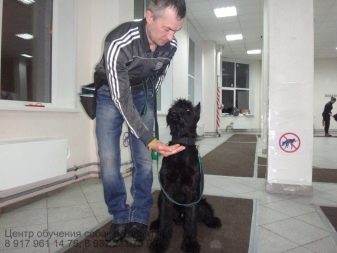

How to train an adult animal?
Of course, it’s easier to teach a pet to obey in childhood. It is more difficult to teach an adult dog, because she has already developed a character and, as usual, has bad habits. If in such cases the animal refuses to obey, you can train it with prohibitive commands using the electronic collar. In addition, if the animal refuses training, you can use a metal collar with spikes during training. Such an accessory is also useful in the educational process of a student of giant breeds. (e.g. Tibetan mastiff).
In the absence of irritants, they can be thrown. In this case, the best background for classes will be walking. In order for the animal to consolidate the skill, training places must be constantly changed. This will allow her to understand that, regardless of the place, the prohibition rule is constant.To quickly teach the dog to obey, the command must be pronounced without repetition, but loudly, shortly and expressively.


The sequence of the training scheme is as follows: the team and immediately a jerk (+ a slap with a newspaper for dogs that do not respond to leashes). Do not quit classes if the pet does not obey. By this, the owner demonstrates his helplessness. You can’t even throw off training to a dog handler, because then the owner will not be the authority to whom the dog must obey. If the behavior requires correction, it is better to conduct classes under the supervision of a dog handler.
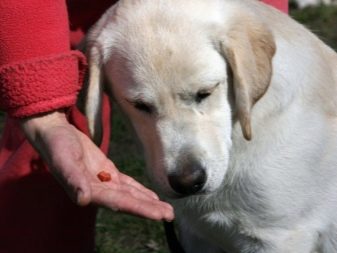

Possible mistakes
Unfortunately, a single dog training scheme does not exist, and therefore, without original training and consistency, counting on a good result is useless. Often the educational process is unsuccessful due to errors made by the breeder. For example, he can endlessly pull the leash and beat the dog, but this will not give positive results. From such training, the animal either becomes embittered or closes, losing confidence in itself and its strengths.



There are other master blunders that the owner makes when training his pet.
- One of the key mistakes newcomers make is to use the command out of place. Usually in such cases, the animal ceases to understand what is required of it and, as a result, ceases to obey the owner.
- The dog subtly reacts to the owner's irritability, hourly reprimands will lead to her indifference. In the future, she will continue to violate the prohibitions, but at the same time she will try to go unnoticed.
- The animal will not follow orders if it does not see the point. In a dog family there are breeds whose representatives still need to be able to carry away to fulfill the order.
- A common mistake in the learning process is long and exhausting classes. A dog cannot concentrate his attention on one team, meekly performing it for hours.
- In no case can you simultaneously train the animal along with the prohibiting team other orders. The skill is not easy, and therefore teams are trained and reinforced gradually, as they master one, they move to another.
- The error is the belated command-ban. For example, if the dog is already fighting with another. This will not give a result and may disorient the animal.
- Absolutely nothing can be prohibited. The pet needs to sniff any objects, including on the street. If you forbid him almost everything, the value of the team will depreciate.
- You can not shift the training of a pet from day to day. Already at half a year in the animal, a behavior model is laid down, which can be problematic in the future to correct.
How to teach a dog the command "Do not", see the video below.





